Israel – Coalition Math Points to Probability of a Right-leaning Government
ISRAEL RISK ASSESSMENTS
| One Year Ahead | Five Years Ahead | |||||
| Risk Category | Year Ago |
Current 02/15 |
Worst Case |
Best Case |
Worst Case |
Best Case |
| Political Risk | 66.5 | 67.0 | 62.5 | 69.5 | 61.0 | 74.0 |
| Financial Risk | 41.5 | 41.5 | 40.5 | 43.5 | 36.0 | 43.5 |
| Economic Risk | 40.5 | 41.5 | 39.0 | 43.0 | 30.5 | 44.5 |
| Composite Risk | 74.3 | 75.0 | 71.0 | 78.0 | 63.8 | 81.0 |
| Risk Band | Low | Low | Low | Low | Mod. | V. Low |
POLITICS
Government Stability
Coalition Math Points to Probability of a Right-leaning Government
A snap parliamentary election will be held on March 17, triggered by the collapse of Prime Minister Benjamin Netanyahu’s ideologically eclectic coalition less than halfway through its four-year mandate. The political marriage in which Netanyahu’s center-right Likud teamed up with both moderate nationalists and staunch right-wingers was troubled from the start by disagreements over budget issues, and was left weakened in the aftermath of a 50-day military operation in the Hamas-controlled Gaza Strip.
The divorce became official in early December, when Netanyahu sacked Finance Minister Yair Lapid, the leader of the centrist Yesh Atid, and Justice Minister Tzipi Livni, a former Likud member who currently heads the centrist Hatnuah, and is committed to pursuing negotiations aimed at achieving a two-state solution to the Israeli-Palestinian conflict. Netanyahu accused both of undermining his authority: Lapid by publicly criticizing the prime minister’s positions on the Iranian nuclear talks and the conditions for renewed dialogue with the Palestinians, and Livni by meeting with Palestinian Authority President Mahmoud Abbas against Netanyahu’s instructions prior to the onset of the Gaza military campaign in July 2014.
The timing of the vote is hardly ideal for Netanyahu, whose public approval rating fell sharply amid mixed post-conflict assessments of exactly what was accomplished by the military campaign in Gaza and the negative economic fallout of Operation Protective Edge. But the prime minister appears to have wagered that his Likud will do well enough to finish on top, and that the overall results will leave him with some better options than he had following the elections in January 2013.
However, the gamble could backfire, as Likud is running neck-and-neck in the polls with an electoral alliance of the center-left Labor Party, headed by Isaac Herzog, and Livni’s Hatnuah. The most recent opinion surveys suggest that Likud holds a slight edge, although various polls suggest the so-called “Zionist Camp” will win 22-25 seats in the 120-member Knesset, while Likud could win as few as 20 and as many as 27. Israeli elections are famous for late surges and spectacular collapses, but barring a pre-vote splintering of the center-left coalition, all signs are that the race for first place is a toss-up.
Given the projected numbers for the two front-runners, forming a majority government is all but certain to pose significant difficulties for the winner. But the immediate objective of both blocs is securing the most seats, thereby claiming the right to make the first attempt to meet the coalition challenge.
For Netanyahu, whose support among his base is rock solid (as indicated by his re-election as party leader with roughly 80% of the vote), that means attracting votes from voters who might otherwise be inclined to support parties to Likud’s right. Viewed through that strategic lens, it would seem that Netanyahu’s controversial decision to use the US Congress as a forum for publicly criticizing President Barack Obama’s Iran policy, his approval of new construction of settler housing in the disputed West Bank, and his calls in the wake of terrorist attacks in Europe for the Jewish population of the continent to emigrate to Israel are all calculated to maximize his attractiveness among the most nationalist, the most religious, and the most right-wing voters in the country. To the extent that he fails, the benefit will fall to precisely those parties that he will turn to first as potential coalition partners, assuming he gets the chance to form a government.
The riskiness of that strategy stems from the high probability that a coalition of Likud and the parties to its right will not win the combined total of 61 seats required to form a majority government. If Netanyahu is forced to look to his left for a partner with enough seats to ensure a majority, he could be hard-pressed to find any takers.
No bridge can be assumed to be permanently burned in Israeli politics, but recent statements by Netanyahu that amount to warnings that voting for the left is tantamount to lending aid and comfort to the Islamic State in Iraq and the Levant (ISIL) might just do the trick. Even if he can still woo Yesh Atid, Hatnuah, or Labor into a mostly right-wing government, the coalition would be troubled by the same inherent tensions that doomed the last government.
The political calculus is even more daunting for the Zionist Camp. Labor and Hatnuah are running on platform that balances a strong commitment to the peace process and a two-state solution with an economic strategy that tilts slightly to the left, the focus being the decline in living standards for average Israelis in recent years. Even the more centrist partner, Hatnuah, is pushing for increased public spending and the distribution of free land to ease pressure on the housing market.
Although Herzog and Livni (who have agreed to hold the prime minister’s post on an alternating basis) might be able to find support for their economic agenda among one or more of the parties of the right, their diplomatic plans would face an effective internal veto under such a scenario.
Whether Herzog gets the opportunity to form a government may come down to the assessment of some small section of the electorate as to whether he has what it takes to be the prime minister of Israel under current conditions. The majority of Israelis may be suffering from Netanyahu fatigue, but the incumbent is a battle-tested leader. In contrast, Herzog lacks the gravitas of notable former Labor leaders such as Yitzhak Rabin, Shimon Peres, and Ehud Barak.
Even if a resolution of the conflict with the Palestinians is possible, achievement of that goal will not have a bearing on the turmoil in Syria, or the threat posed by ISIL or a nuclear-armed Iran. With the recent attack on Jews by Muslim extremists in Paris, the killing of two Israeli soldiers by Hezbollah, and reports of an Iranian general apparently plotting an offensive in the Golan Heights, the security threats to Israel will be very much in the minds of voters when they go to the polls in March, and to the extent that any of them consciously weigh the qualifications of Netanyahu and Herzog to ensure that they remain protected, the former will likely be at an advantage.
ECONOMY
New Government Will Need to Refocus on Economy
The election campaign is taking place against the backdrop of concerns over the economy and fiscal trends that prompted Fitch to revise the outlook for Israel’s single-A credit rating from positive to stable in November 2014. Although the move precludes a downgrading of the country’s credit rating for the foreseeable future, it nonetheless raises the prospect of increased borrowing costs if it is followed by similar action from Moody’s and Standard and Poor’s, which could subsequently have an impact on other assets should the next government not embark on corrective policy measures.
Regardless of the degree to which the stalled peace process with the Palestinians and the risks associated with aggravated tensions with Hamas and Hezbollah might be weighing on the minds of voters, those risks have long been taken into account by investors, for whom the bigger concerns are the increase in the budget deficit ceiling for 2015 from 2.5% of GDP to 3.4% of GDP, the strengths (or otherwise) of the underlying economy, and possible reversal of the declining trend in the public debt burden, which fell to a historical low of 67.4% of GDP in 2013.
As usual Likud is not campaigning on a detailed economic-policy platform, but can be expected to maintain greater fiscal prudence than a Labor-led government that depends on left-leaning parties for its majority. The 2014 budget deficit was held below the 3% of GDP target in 2014 by means of spending cuts of more than $300 million and a change to the calculation of the national accounts that resulted in a larger nominal GDP figure. However, the favorable fiscal outturn was achieved in part by pushing some of the costs of the Gaza offensive into the 2015 budget, which has now been put on hold pending the formation of a new government.
The offensive against Hamas weakened private consumption, construction, manufacturing, and tourism during the third quarter of 2014, but the effect was not as substantial as first feared. Revised estimates to real GDP growth for the period indicate that the economy did not contract, but grew at an annualized rate of 0.2% on a seasonally adjusted basis. The estimated real GDP growth rate of 2.6% for all of 2014 is low by Israeli standards, but with the Bank of Israel (BOI) maintaining its 0.25% policy interest rate into February and the unemployment rate sliding to 5.7% in the fourth quarter of 2014, the economy has some underlying momentum, and is forecast to expand by 3.2% in real terms in the current year.
Exchange rate depreciation contributed to a 0.9% (year-on-year) increase in Israel’s imports bill in 2014—the first rise in three years—but 1.1% growth of exports, while below the historical trend, was still enough to prevent a widening of the trade deficit. The current account surplus narrowed from $4 billion in the first quarter of 2014 to $1.7 billion in the third quarter, but the revival of tourism earning boosted the services surplus in the fourth quarter, and should bolster the current account surplus in the coming year. Assuming reasonably stable inflows of transfers, a more competitive, but stable, shekel will provide a lift to exports, while lower energy prices will limit any increase in the imports bill, resulting in a current account surplus of about 4% of GDP in 2015.
BOI chief Karnit Flug is under no great pressure to reverse the interest rates cuts introduced to support the economy and ensure that inflation does not fall too far below the lower limit of the central bank’s 1%–3% target range. Consumer prices meanwhile declined at an annual rate of 0.2% in December, extending the deflationary trend to four months. With falling oil prices and a reduction in water and electricity charges keeping inflation expectations low, there is little risk that the BOI might prematurely move to tighten monetary policy. Flug is more likely to look instead to regulatory measures to stem upward pressure in the mortgage lending market.





